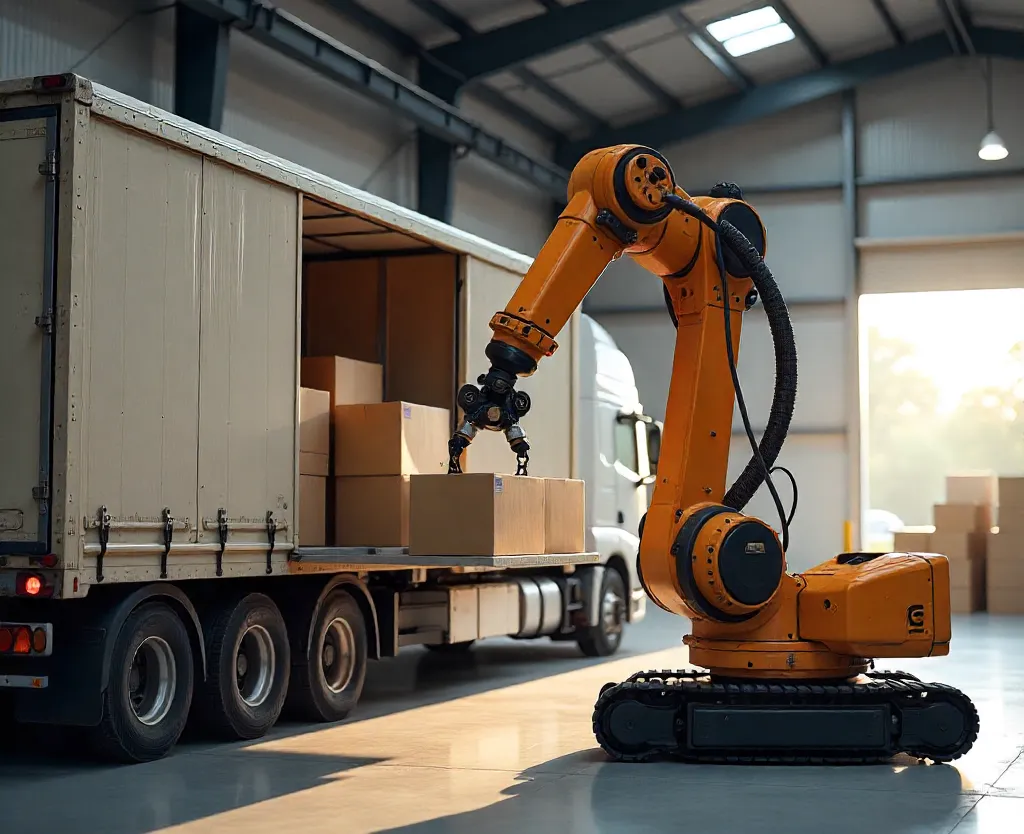The Shift Toward Autonomous Unloading in Warehousing
The warehouse dock has always been the bustling nerve center of supply chains. It’s where shipments begin and end—trucks arrive, goods are unloaded, and deliveries are dispatched. Traditionally, this space demanded a heavy human touch: backbreaking lifting, sorting under pressure, and a race against the clock. But now, autonomous robots are stepping up, transforming docks into hubs of speed, safety, and efficiency.
Rather than replacing workers, these robotic helpers take on the heavy, repetitive, and physically demanding tasks, freeing up humans to handle smarter roles. This evolution not only changes how goods move but also reshapes entire logistics workflows across the globe.
Understanding Autonomous Unloading
At its core, autonomous unloading means robots managing the process of removing goods from trucks or containers without constant human intervention. They can scan, pick, stack, and transport items within the warehouse atmosphere independently.
Research shows that automation in supply chains yields faster turnaround, heightened accuracy, and cost savings of up to 30%. It’s not just about replacing human effort but complementing it. Robots handle the grunt work; humans oversee decisions backed by analytics.
Picture a robot rolling up to a delivery truck, scanning barcode labels, and quickly unloading goods into the warehouse without pause or risk of injury—sounds like tomorrow, but it’s becoming today’s reality.
Key Benefits of Robots on the Dock
- Hız: Robots built for dock work drastically reduce unloading times, turning what took hours into minutes.
- Labor relief: Dock work is notoriously tough—hot summers, freezing winters, and heavy lifting. Robots mean less physical strain and fewer staffing headaches.
- Maliyet verimliliği: Initial investment aside, robots cut labor expenses, minimize mistakes, and prevent damage, all while working uninterrupted, 24/7.
- Ölçeklenebilirlik: During peak shopping seasons or sales, robot fleets can be scaled to handle surges without frantic hiring.
How Autonomous Robots Work at the Warehouse Dock
Modern robots incorporate suction grips, advanced sensors, and intelligent programming to select and place boxes accurately. Boston Dynamics’ “Stretch,” for example, is designed specifically for these tasks, enabling swift, reliable goods handling straight from trucks to storage.
Such automation represents a quantum leap from manual processes, turning a traditionally laborious bottleneck into a streamlined, precision operation.
Üstesinden Gelinmesi Gereken Zorluklar
Of course, it’s no walk in the park implementing full dock automation:
- Upfront costs: The technology doesn’t come cheap, and smaller operations might find the initial outlay tough.
- Systems integration: Robots need to communicate seamlessly with existing warehouse management software, which can be tricky if older platforms are involved.
- Human-robot balance: Robots excel with repetitive tasks, but human insight remains irreplaceable for problem-solving and oversight.
Many companies adopt a phased approach, integrating a few autonomous units first before jumping all in.
The Road Ahead for Warehouse Dock Automation
Looking forward, warehouse docks will evolve even further. Autonomous robots won’t stop at unloading—they’ll scan barcodes, sort shipments by destination, and feed goods into automated storage systems with minimal human intervention.
This technological partnership means safer, smarter jobs where humans supervise and strategize, while robots handle heavy lifting and repetitive routines. Within the next few years, robots on the dock will be as essential as forklifts are today.
Real-World Impact
The robotic revolution is here and now, not some far-off dream. Early adopters often see faster turnaround, fewer errors, improved workplace safety, and enhanced employee satisfaction—game changers for the entire supply and logistics network.
Insights Summary and Logistics Implications
Autonomous unloading represents a profound shift in logistics, blending human ingenuity with robotic efficiency. For freight and cargo transport, this means accelerated delivery times, reduced damage risk, and more consistent handling quality during loading and unloading phases. Warehouses gain flexibility to adapt to fluctuating shipment volumes without compromising workers’ health or escalating labor costs.
While large capital investments and IT integration are hurdles, the long-term benefits for global supply chains and freight forwarding operations are clear. For companies involved in house moves, bulky item transportation, or international shipment distribution, embracing such technology could redefine speed and reliability.
Why Personal Experience Still Matters
Even with glowing reviews and honest feedback about autonomous dock systems, nothing beats firsthand experience. Every warehouse has unique challenges, and the human touch still counts in judging what works best. Platforms like GetTransport.com help users connect with affordable, global cargo transportation options, supporting everything from office relocations and freight deliveries to moving large furniture or vehicles.
By offering transparency, affordability, and a wide variety of transportation solutions, GetTransport.com empowers customers to make informed choices without breaking the bank or facing unpleasant surprises. Whether you’re shipping a pallet across borders or arranging a housemove, the platform’s versatility aligns perfectly with the evolving demands of modern logistics.
GetTransport.com ile Yolculuğunuzu Rezerve Edin and experience the difference yourself.
Conclusion: Embracing Autonomous Unloading for Smarter Logistics
The warehouse dock is rapidly transitioning into a high-tech, automated zone where robots and humans work side by side to optimize cargo handling. Autonomous unloading cuts costs, accelerates delivery, and enhances workplace safety—a win-win for companies and workers alike.
GetTransport.com fits seamlessly into this landscape by offering efficient, cost-effective, and convenient transport solutions tailored to diverse logistics needs worldwide. With everything from parcel shipping to heavy haulage, it helps streamline freight movement, reducing complexities and boosting reliability.
In a world where smart logistics is king, embracing automation both at the dock and beyond will define competitive advantage—and GetTransport.com shows how accessible this future can be today.

 The Rise of Autonomous Robots Changing Warehouse Dock Loading and Unloading">
The Rise of Autonomous Robots Changing Warehouse Dock Loading and Unloading">